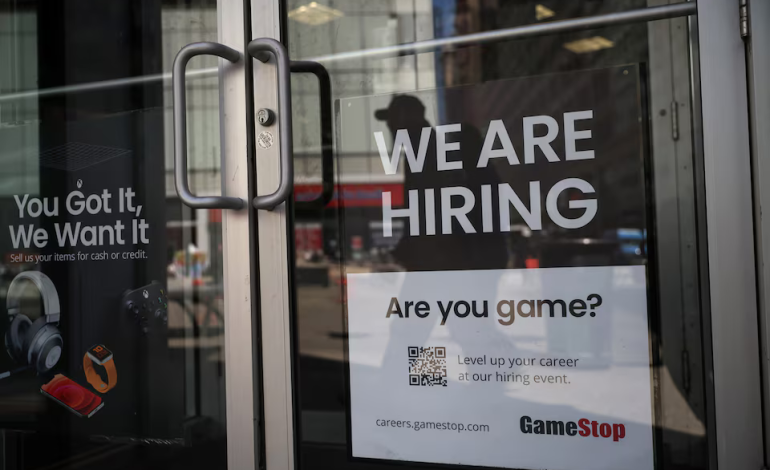US Job Growth Moderates in May, Unemployment Holds Steady at 4.2%

- Published June 7, 2025
The US labor market added 139,000 jobs in May, exceeding expectations but continuing a trend of slower job creation amid economic uncertainties and ongoing trade policy shifts.
The Bureau of Labor Statistics released the data Friday, showing a slight pullback from April’s downwardly revised gain of 147,000 jobs. The unemployment rate remained unchanged at 4.2%.
Health care and hospitality led job creation, with health services adding 62,000 positions and leisure and hospitality contributing 48,000. Social assistance jobs increased by 16,000. These gains helped offset losses in other sectors, including a 22,000-job decline in government employment, largely attributed to federal workforce reductions.
Wage growth was stronger than forecast. Average hourly earnings rose 0.4% in May and were up 3.9% year-over-year, signaling continued labor market tightness despite broader signs of moderation.
While the headline payroll number beat expectations — the Dow Jones consensus estimate was 125,000 — revisions to prior months weighed on the overall trend. March and April figures were revised down by a combined 95,000 jobs, suggesting a more subdued pace of hiring than previously thought.
The labor force participation rate dipped to 62.4%, with the employment-to-population ratio falling to 59.7%, reflecting a decline in the number of people actively working or seeking employment. The household survey, which feeds into the unemployment rate, showed a notable drop of 696,000 in overall employment and an increase of 71,000 in the number of unemployed Americans.
Economists and market observers say the report paints a picture of a labor market that remains resilient, yet vulnerable to external pressures — including tariffs and cautious corporate planning. Employment gains were concentrated in a few sectors, with others showing stagnation or contraction. Manufacturing, for example, shed 8,000 jobs, and temporary employment — often a precursor to broader hiring shifts — fell by over 20,000.
Despite this, markets responded positively to the report. Treasury yields rose and US equities moved higher, with investors interpreting the data as a sign that the Federal Reserve will maintain its current interest rate policy at its June meeting. Federal Reserve officials have signaled a cautious approach, focusing on inflation risks while acknowledging the slower — but still positive — employment growth.
Lindsay Rosner, head of multi-sector fixed income investing at Goldman Sachs Asset Management, noted, “Today’s stronger-than-expected jobs report will do little to alter the Fed’s patient approach,” referencing the central bank’s balancing act between inflation control and supporting economic momentum.
President Donald Trump, however, renewed his calls for an aggressive interest rate cut, criticizing Fed Chair Jerome Powell on social media for keeping borrowing costs elevated. Trump suggested that a one-percentage-point cut would boost the economy and reduce government debt service costs, while reiterating his view that inflation remains under control.
Looking ahead, analysts remain divided on the trajectory of the job market. While current hiring remains healthy, slower gains, lower participation, and uncertainty from trade and fiscal policy are raising concerns about sustainability.
Daniel Zhao, an economist at Glassdoor, summed up the sentiment:
“This report shows the job market standing tall, but as economic headwinds stack up, it’s only a matter of time before the labor market starts straining under the pressure.”
With input from CNBC, the New York Times, and Reuters.









The latest news in your social feeds
Subscribe to our social media platforms to stay tuned